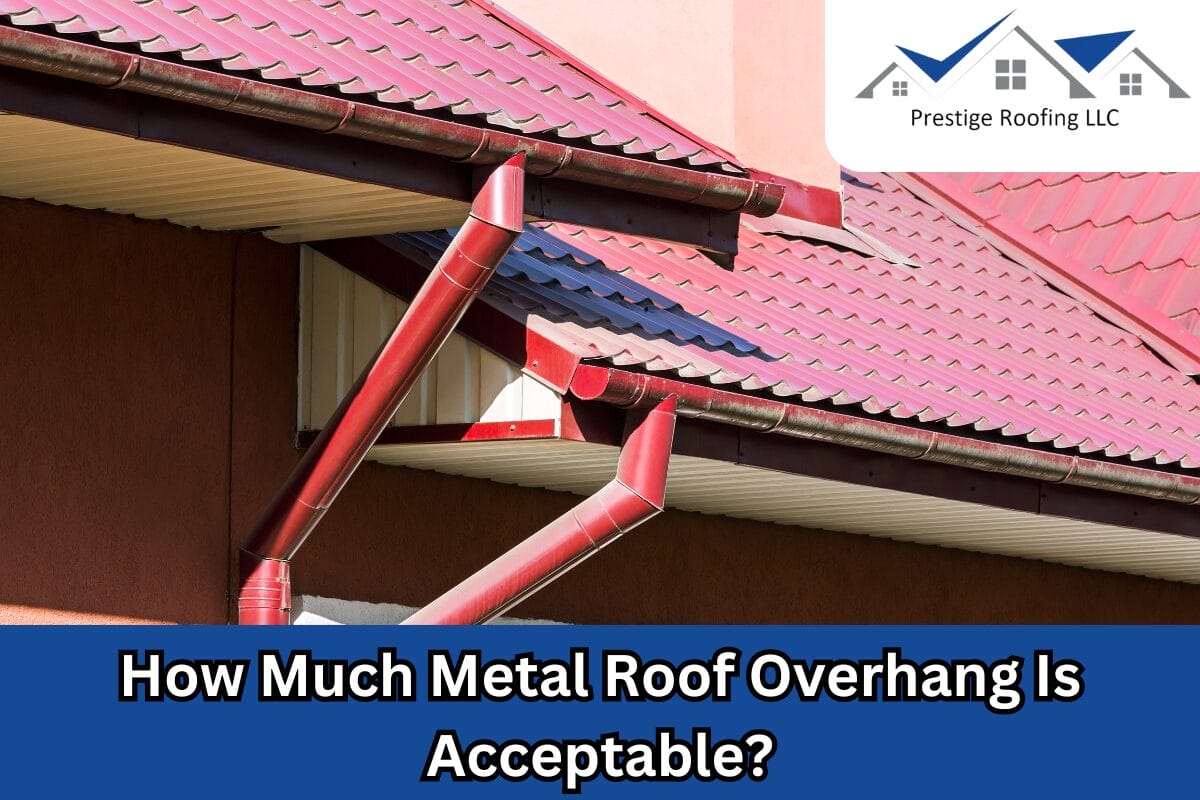There are some parts of your home that you might not think about often or even know about, but these components play an important role in keeping your home sturdy and safe. The roof overhang is one example of this.
If you are a homeowner looking to install a new metal roof, then apart from the style and the color, there is another thing you should be aware of: the length of your metal roof overhang.
Many homeowners are perplexed about the appropriate overhang length for their metal roofs. While it may seem like a minor detail, this part of your roof plays a crucial role in protecting your home from heavy rains and snow and also ensures the longevity of your roofing system.
Today, we will discuss the ideal overhang length and provide you with practical insights so you can make an informed decision on your roof replacement or new roof installation project in Wisconsin.
Understanding the Purpose of a Roof Overhang
Before delving into the specifics, let’s learn about what a roof overhang is in the first place. An overhang is the part of the roof that extends beyond the exterior walls of your home. Its primary purpose is to redirect water away from the foundation and prevent moisture from seeping into the walls or causing damage to the siding.
Additionally, an overhang provides shade and protection for your windows, doors, and exterior walls, minimizing the impact of direct sunlight and reducing energy costs associated with cooling your home.

Determining the Ideal Overhang Length
The ideal overhang length for a metal roof is influenced by several factors, including the regional climate, your roof pitch, and local building codes. Here’s a breakdown of how these elements come into play:
Climate
As we discussed, the roof overhang protects your home from water infiltration due to heavy rain. So if you live in a region that receives significant rainfall or snowfall, you might require a longer overhang. This is recommended to ensure effective water diversion. Generally, as a homeowner in Wisconsin, you will need a longer overhang. Conversely, in drier climates, a shorter overhang may suffice.
Roof Pitch
You also need to take a note of the pitch of your roof before installing a new metal one. The steeper the roof pitch, the shorter the overhang can be, as water will naturally flow off the roof more rapidly.
Plus, a higher slope will make it difficult to create a larger overhang. A lower pitched roof, on the other hand, may require a longer overhang to compensate for the slower water runoff.
Local Building Codes
Most municipalities have specific guidelines regarding minimum and maximum overhang lengths. These regulations are designed to ensure safety and structural integrity, taking into account factors such as wind loads and potential snow buildup over the winter.
General Guidelines To Follow For Metal Roof Overhangs
While the ideal overhang length can vary based on the aforementioned factors, here are some general guidelines to consider:
For most residential metal roofs, an overhang of 12 to 18 inches is typically recommended.
In areas with heavy rainfall or snowfall, an overhang of 18 to 24 inches may be more appropriate.
For low-pitched roofs (with a slope of 3:12 or less), a longer overhang of 24 to 36 inches may be necessary to ensure proper water diversion.
Steeper roofs (with a slope greater than 6:12) may require shorter overhangs, ranging from 6 to 12 inches, as water will naturally shed more quickly.
It’s important to note that these guidelines are not set in stone, and your specific situation may require a custom approach. Consulting with a professional roofer or adhering to local building codes is essential to ensure the safety and longevity of your metal roof.

How You Can Maximize The Benefits of Your Metal Roof Overhang
Once you’ve determined the ideal overhang length for your metal roof, it’s essential to ensure that you hire an experienced contractor to install your new roof. Proper installation and maintenance can go a long way in the overall health of your roofing system. Here are some tips to keep in mind:
- Proper Flashing: It is crucial to ensure that the flashing, or in this case the drip edge flashing that goes around the edges of the overhang, is installed correctly to prevent water intrusion and potential leaks.
- Gutter Installation: Installing durable, seamless gutters along the overhang can enhance water management and prevent erosion around the foundation.
- Ventilation: Adequate ventilation in the overhang area can prevent moisture buildup and potential condensation issues.
- Regular Maintenance: Doing regular inspections and cleaning your metal roof can help identify potential issues and ensure the longevity of your roofing system.
Conclusion
While this guide provides general insights into determining the ideal overhang length for your metal roof, it’s always recommended to consult with a professional roofer.
This is where the team of Prestige Roofing can help. We offer the best metal roof replacement services in the area. Our team is well aware of all the local building codes, climate conditions, and will take care of the unique characteristics of your home.
Remember, a well-designed and properly installed metal roof overhang can not only enhance the aesthetics of your home but also provide invaluable protection against the elements. Contact us today at (920) 791-0414.

